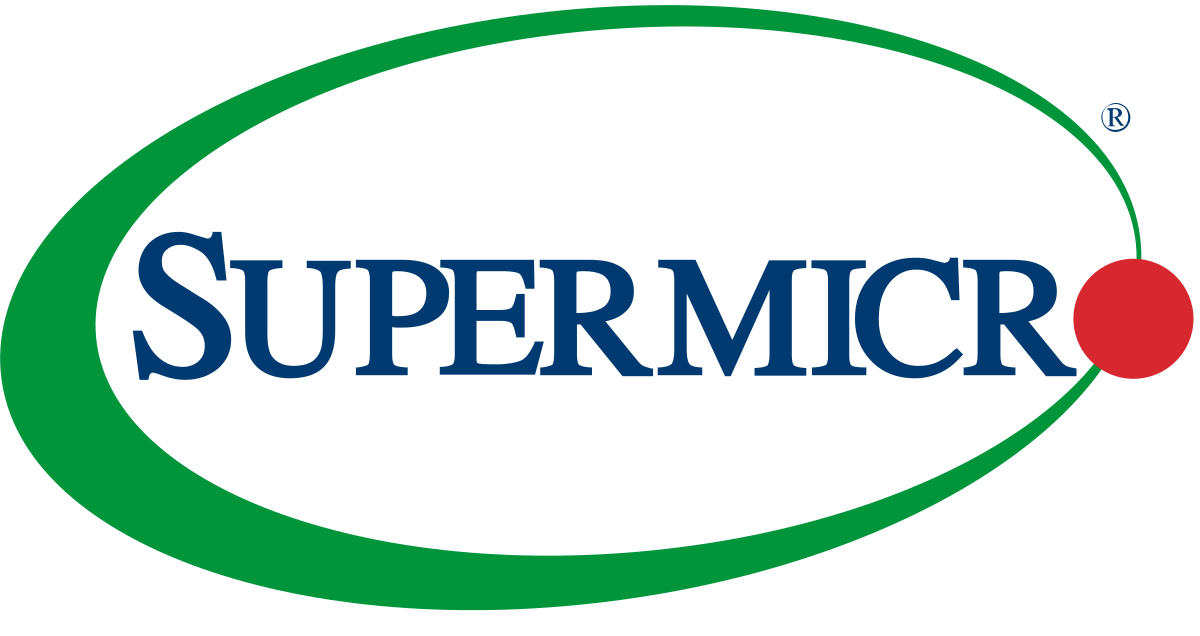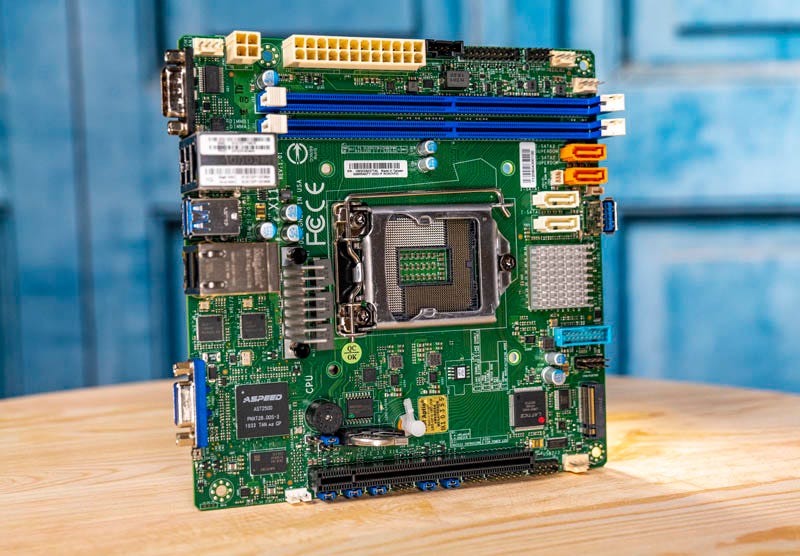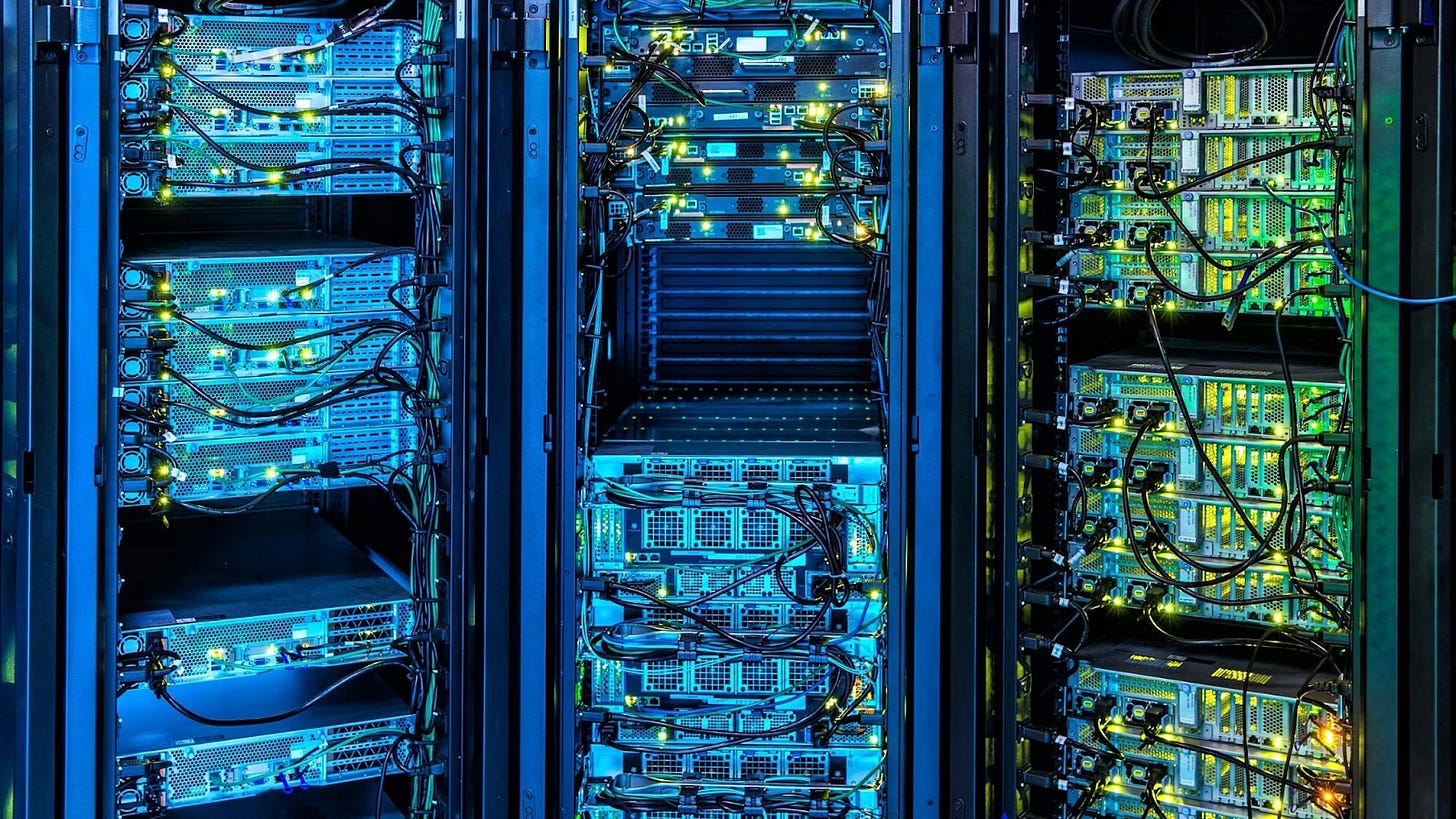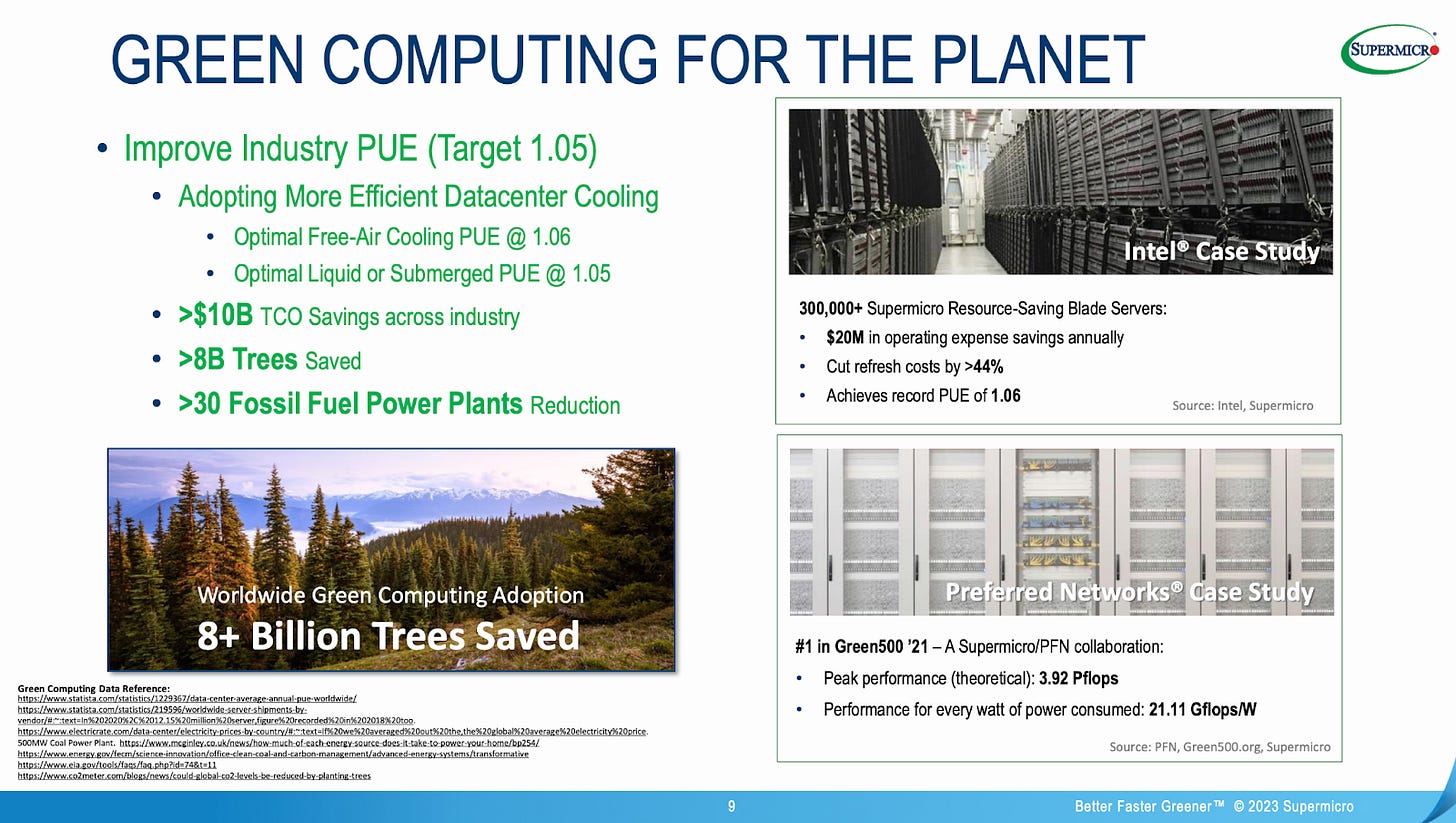Part 1: Deep dive on Super Micro Computer ($SMCI)
In order to read this deep dive on Super Micro (SMCI) you’ll need to become a paid subscriber by clicking the button below. If you’re already a paid subscriber, I appreciate your support.
Paid subscribers receive several deep dives per month plus they get full access to my investment portfolio (up +77% YTD) including my daily activity, my investment models and my daily webcasts.
Here are some of my other newsletters…
In addition to my newsletters, I also run a Stocktwits room where I post about both of my portfolios/strategies (investment portfolio & trading portfolio) plus my daily commentary and morning newsletter.
Company: Super Micro Computer aka Supermicro
Ticker: (SMCI)
Website: SuperMicro.com
IPO date: March 29, 2017 (traditional IPO)
IPO price: $8.00
Stock price at the time of writing: $222.40
Outstanding shares: 52.5 million
52 week high: $265.00 on June 09, 2023
52 week low: $37.01 on July 05, 2022
ATH: $261.65 on June 07, 2023
Market cap: $11.676 billion
Net cash/debt: $155 million
Enterprise value: $11.521 billion
Headquarters: San Jose, California, United States
Number of employees: 4,600+
Average price target from analysts: $205.00 — 7.8% below current price
Next earnings call (Q4 FY 2023): N/A
Investor Relations: https://ir.supermicro.com
Q3 FY 2023 Earnings Report: https://s25.q4cdn.com/632471818/files/doc_financials/2023/q3/Exhibit-99-1_2023-03-31.pdf
Q3 FY 2023 Earnings Call Transcript: https://seekingalpha.com/article/4599192-super-micro-computer-inc-smci-q3-2023-earnings-call-transcript
Q3 FY 2023 Earnings Presentation: https://s25.q4cdn.com/632471818/files/doc_financials/2023/q3/Earnings-Deck-Q3FY23-April-28-V5.pdf
Outline
Introduction [part 1]
Company Background [part 1]
Opportunity [part 1]
Business Model [part 1]
Competitive Advantages [part 1]
Risks [part 1]
Valuation [part 2]
Investment Model [part 2]
Analysts [part 2]
Technicals [part 2]
Conclusion [part 2]
Additional Sources [part 1 and 2]
Below the paywall is part 1 of the SMCI deep along along with links to my investment portfolio (up 77% YTD), investment models and daily webcasts.
I hope you consider becoming a paid subscriber for just $20/month or $200/year.
As a paid subscriber you have access to my…
Investment portfolio [click here]
Investment models [click here]
Daily webcasts [click here]
**These are new links, I have to switch them up at the beginning of every month so former subscribers don’t have access. Sorry for the inconvenience.
Introduction
I’ll have more introductory thoughts in part 2 of the deep dive but I’ll just touch on a few points right now.
Disclosure: I do have a current position in SMCI and I have been adding on this recent pullback, I’m hoping the 21/23d ema hold up. If SMCI loses the 21/23d ema I’m not sure if I’ll trim my position and wait for for the stock to find a bottom before buying back those shares or just keep what I have and average down. There’s a large unfilled gap from May which would require a 24% drop from today’s closing price to fill that gap. The 50d ema is 19% lower from the current price while 50d sma is 27% lower from here, as of now if SMCI revisited the 50d sma it would close the gap so this is always possible but unlikely in my mind given the current fundamentals, valuation and interest in this niche because of NVDA and AMD.
Unfortunately the analyst estimates only go out a couple years so I had to come up with my own forecasts/estimates through FY2028 but given their partnership with large chip companies like NVDA and AMD, I believe SMCI will be a beneficiary of their success over the next 5-10 years as this AI revolution unfolds and data centers need to upgrade their hardware/servers.
Even though SMCI is up 400% over the past year I think it could be up another 200-300% over the next 3-5 years so I’ll continue holding a position and will average down as needed.
SMCI valuation remains attractive at less than 20x 2024 earnings (est.) versus AMD at 30x 2024 earnings (est.) and NVDA at 40x 2024 earnings (est.) — I still like AMD and NVDA but I’d rather buy a company like SMCI which has similar top line growth, more attractive P/E multiple, more room for net income margin expansion and a much smaller market cap which makes them a possible acquisition target.
I’ll have more thoughts on SMCI in part 2, hope you enjoy this deep dive. I don’t think many investors are familiar with this company and even though I wish I found them a year ago I still believe there’s substantial upside over the next 3-5 years assuming the fundamentals remain strong ie 20-25% top line growth.
Company Background
Super Micro Computer was established in 1993 in the Silicon Valley region, San Jose, by a Taiwanese engineer, Charles Liang (who still runs the company and owns approximately 15% of it), and his wife, Sara Liu (who serves as a Senior Vice President and sits on the Board).
Liang and Liu immigrated to the United States in the mid-1980s to pursue Liang's further education. He eventually obtained a master's degree in electrical engineering from the University of Texas.
He began his career as a Design Engineer and Project Leader at Chips & Technologies, a chipset technology company, and Suntek Information, a system and software development company. Prior to launching Super Micro, he spent several years as President and Chief Design Engineer of Micro Center Computer, a high-end motherboard design and manufacturing company.
His experience designing motherboards eventually led to the creation of Super Micro Computer. The company started as a manufacturer of this critical component of any computer, initially targeting PCs before turning its focus to servers.
Between motherboards and servers, Super Micro was selling subsystems, like the central processing unit (CPU) and memory unit. Many companies were buying subsystems from Super Micro and building their own servers from these components.
Liang quickly saw an opportunity to become a provider of its own server and storage solutions, and by the late 1990s, Super Micro became one of the market leaders in this fast-growing segment.
Throughout the years, Super Micro developed various breakthrough technologies, most of which came in collaboration with the largest hardware providers. During the 2000s, the company established a partnership with Intel, the market dominator in CPUs at that time.
In over 30 years of this collaboration, the two companies, not once but at least twice, have completely changed the computer industry. First, in 2001, they launched the first dual-socket Xeon server that became foundational for internet infrastructure. Later, in 2007, the two collaborated on the twin architecture solution, doubling the density of servers in one new form factor that eventually became an industry standard, allowing for improved energy efficiency and scalability in data centers.
On the wave of success with Intel, that very same year, Liang brought Super Micro public. The company IPOed in March 2007, raising $64 million at about $229 million valuation, selling 8 million shares at $8 per share (below a forecast range of $9.50 to $11.50). That year, the company generated $420 million in revenue, posting almost $20 million in net income.
While Super Micro was growing in the mid-30s year over year and has been profitable from the first year of its operations (true to this date), Liang had much bigger ambitions than just being a seller of servers and storage solutions. So the transition from a server/storage hardware manufacturer to a Total IT Solutions provider began.
Fast forward to 2023, Super Micro offers a wide range of IT solutions (including complete servers, storage systems, modular blade servers, blades, workstations, complete rack scale plug and play solutions delivering pre-defined and pre-tested full rack scale solutions, networking devices, server subsystems, system management, and security software, as well as on-site services to help customers install, upgrade, and maintain their computing infrastructure) across verticals spanning enterprise data centers, cloud, AI, 5G, and edge computing.
Along the way, the company established relationships with other large hardware providers, including Nvidia (both for GPU and CPU) and AMD, which further propelled the success of Super Micro in recent years.
The primary reason why Liang was able to win these large partnerships (and continue expanding relationships with them) is a unique way of doing business: while all competitors sell standard boxed solutions, Super Micro offers highly customizable products with features and configurations tailored specifically for each customer. This customer-centric approach also helps Super Micro to rapidly introduce new products incorporating the latest technology developed by hardware giants, thus constantly staying ahead of its competition, not to mention the price (cheaper than competitors) and energy efficiency (consume less power).
Super Micro continues to emerge as one of the largest global suppliers of Total IT Solutions and gain market share. While most companies in the industry faced supply chain disruptions in the last two years, Super Micro continued to outpace its competition.
The 2022 fiscal year (the company's fiscal year starts in June) was an exceptional year for Super Micro. After struggling for several prior years, the company grew revenue by almost 50% to over $5 billion, posting $285 million in net income with a 5.49% net income margin. This incredible growth was driven even before the AI craze, which began to unfold only in early 2023. The stock has seen over 300% growth in the past year, being up almost 180% YTD.
But Liang sees more opportunities ahead. For the fiscal year 2023 (which ends in June 2023), the company expects to generate approximately $6.8 billion, representing almost 30% YoY growth (note the hard comps with FY2022). He further laid a path to reach $10 billion in sales by 2025 and has an ambitious (as always) mid-term goal of reaching $20 billion in revenues, perhaps by 2030.
As in words Liang: "This is a generational opportunity to become the global leader of rack-scale plug-and-play IT solutions."
But this will come not only from IT solutions but now also from new AI platforms launched during the fiscal year of 2023. AI, perhaps, represents an even bigger opportunity for the company, the size of which is yet to be defined.
What is certain is that Super Micro will continue adding value to its ecosystem, introducing new hardware and software needed to run this hardware, new services, new technology (like liquid cooling), and much more, cementing its position as a market leader for many years ahead.
"I believe that our business has just begun to grow. We have better technology and a better business model than our competition, so I don't think of us as a fully mature company, despite our age." – said Liang to The Silicon Valley Business Journal in late 2022.
Opportunity
Trends
There are two massive transitions undergoing in the computer industry. First is accelerated computing. Second is the generative AI. Somewhere in between those two is green computing.
Super Micro is part of all three, being the trendsetter of the latter.
Accelerated computing
Accelerated computing refers to using specialized hardware components, specifically graphics processing units (GPUs), to perform intensive tasks more efficiently than traditional central processing units (CPUs).
CPUs are great at handling a wide range of general-purpose computing tasks. But when it comes to tasks that require a high degree of parallelism, CPUs are not well optimized for such. Accelerated computing, on the other hand, excels at parallel processing, enabling faster execution of specific workloads.
GPUs specifically were designed to shine at performing multiple calculations simultaneously, like the ones in video games. GPUs are great at working with large datasets and making complex mathematical computations. They are ideal for scientific research, artificial intelligence (AI), deep learning, image and video processing, financial modeling, data analytics, and cryptography.
As technologies like AI, ML, and big data continue to evolve, the need for accelerated computing will only increase. It will remain a crucial enabler for advancements in various industries, driving innovation and creating new opportunities.
Accelerated computing has also influenced the design and performance of servers. Traditionally, most servers were equipped with CPUs. The growth of accelerated computing (GPUs) required a different approach. For example, server manufacturers began incorporating GPUs directly into server designs, eliminating the need for separate hardware installations.
More data centers will be using servers with accelerated computing as we progress forward.
Generative AI
The general computing model (based on general-purpose computing and retrieval systems like human-created content, stored on storage, retrieved, and composed during use) that the industry relied on for more than 60 years is now being reinvented into a generative approach. The global transition to a new computing model is now underway.
Generative AI will change so many things, from content generation and personalization/recommendation systems to speech recognition and natural language processing to dynamic and contextually relevant responses from interactive virtual assistants or chatbots. The applications are endless, and the more this technology advances, the more new applications emerge.
Generative AI requires intensive computations and therefore needs more processing power, meaning more powerful servers with high-performance processors (GPUs in particular) and ample memory capacity are required to efficiently handle these computations.
Furthermore, some generative AI models (like natural language processing or image synthesis) require a significant amount of memory needed to store intermediate results and model various parameters. The larger the dataset, the more memory is required, increasing the demand for those servers with high-capacity RAM or advanced memory management systems.
As generative AI models grow in size of data, they become more complex, and scalability is required. This scalability is possible with powerful servers, such as server clusters or high-performance computing (HPC) systems. They can distribute the workload across multiple servers or GPUs.
With the size comes the problem of storing so much data. This data needs to be efficiently stored and accessed by the server, creating a demand for servers with high-capacity storage devices or distributed file systems.
Going forward, more advanced servers will play a critical role in the development of generative AI, and more demand for such servers is expected in the coming years.
Green computing
With the growth of accelerated computing and AI advancements, more servers and equipment are needed. Modern data centers are consuming more and more power, with AI adding even more consumption as it requires a lot of energy to operate. Moreover, the servers produce a lot of heat (the biggest problem in the server business because you need to get a lot of components into one small space, which is actually shrinking more and more, like in cars, for example), requiring more cooling systems and even more consumption.
Not only do the gas prices remain high (and because of such demand, they will most likely remain high), but also such an enormous amount of energy consumption is bad for our Earth.
The solution to this problem is so-called green computing. More and more data centers are moving to servers with lower power consumption. Green computing is a large trend in the industry, which is only starting to accelerate now, though companies like Super Micro have been addressing this problem for quite a while.
Total Addressable Market (TAM)
Super Micro operates in the Data Center market. According to Statista, the size of the global Data Center market is around $342 billion and is expected to grow to over $410 billion in five years.
This market comprises three segments: Network Infrastructure, Servers, and Storage. The former is the largest of them all and is approximately $200 billion. The Servers segment is projected to reach $90 billion in 2023 and grow to over $113 billion by 2027.
Various verticals within the computer industry will drive the growth of this market, from storage and on-prem cloud to 5G and edge to AI. AI alone could increase the Data Center market by $150 billion, according to Goldman Sachs, which also predicts that AI will increase GDP by 7%.
Nvidia's CEO, Jensen Huang, believes this market will be over $1 trillion in the next ten years as all data centers will undergo massive upgrades to convert servers with CPUs to GPUs to address incremental demand for high-performance computing.
Growth Drivers
Super Micro's objective is to be the world’s leading provider of accelerated computing, offering high-performance servers, storage, and networking.
To achieve this goal, the company has a growth strategy in place, which primarily focuses on AI, growth with existing customers (especially with larger enterprise customers), and critical partnerships (Intel, AMD, and Nvidia).
AI
The AI strategy is based on GPU and rack-scale solutions. Super Micro was the first to market with a broad range of GPU-based systems. The company has the most extensive GPU-based systems line across all competitors.
The AI momentum has benefited Super Micro greatly, with GPU-based systems have been the primary growth driver in the past four quarters. Approximately 20% of all sales came from GPU-based products.
In the latest quarter alone (Q3 FY2023), the company won a record amount of GPU leading-edge design wins, including winning at least two new global top 20 customers. The company also has a record backlog of these products.
Management expects the demand for AI products to accelerate dramatically in the coming quarters, perhaps years.
“We expect this sequential growth to largely be driven by data centers, reflecting a steep increase in demand related to generative AI and large language models. This demand has extended our data center visibility out a few quarters and we have procured substantially higher supply for the second half of the year.” – from Q3 FY2023 earnings call.
More customers are also deploying GPU-based products in rack-scale Plug-and-Play way. The company offers complete racks pre-configured with the latest servers, storage, networking equipment, cabling, software configurations, and management infrastructure designed and built by a global in-house staff of data center experts.
Growth with existing customers
In FY2022, the company sold its products to over 1,000 direct customers in over 100 countries. These customers come from a diverse set of market verticals, including enterprise data centers, cloud computing, AI, 5G, and edge computing.
Super Micro has recently refreshed its entire product portfolio (based on new CPU, GPU, Storage, and Fabric technologies from key partners, including NVIDIA, Intel, AMD, and others) and plans to offer upgrades to its existing customers.
Enterprise customers represent the biggest opportunity for Super Micro. The company predominantly focuses on these customers, offering them new GPU servers (with aggressive pricing), as well as additional software and services required for large-scale deployments, meeting service level agreements, and addressing uptime requirements.
For the first time, one particular customer (Cloud Service Provider) has represented more than 10% of the company's total revenue, highlighting the growth possibilities within existing customers. Management further expects more such customers in the coming quarters.
Critical partnerships
Super Micro's strategy for decades was to work closely with the leading microprocessor, GPU, memory, disk/flash, interconnect vendors, and other hardware and software suppliers to coordinate its new products' design with their product release cycles.
This strategy has worked perfectly for the company for years and allows it to constantly introduce new products incorporating the latest technology faster than any other competitor.
Because of this strategy, Super Micro was able to partner with the best-of-the-best in the industry, including Intel, AMD, and, most recently, Nvidia.
The latter partnership should be especially lucrative for Super Micro. Together, they announced a new AI development platform to accommodate high-performing GPUs to power the world’s fastest supercomputers.
“We have built a close and collaborative relationship with NVIDIA over the years by co-developing and offering the most optimized and the fastest time-to-market GPU platform on the market.” – from Q3 FY2023.
Nvidia should be the biggest beneficiary of the industry's shift to GPUs, which should also benefit Super Micro in a big way.
Further establishing relationships with critical partners is not only one of the key priorities for Super Micro but also a significant growth opportunity (through recommendations/referrals that these key partners can do).
Business Model
Super Micro operates as a hardware company, selling primarily to B2B customers, including enterprises, data centers, cloud service providers, and other organizations needing high-performance computing infrastructure.
The company designs and manufactures an extensive range of server and storage products as well as subsystems and other accessories in-house, predominantly across its US and Taiwan facilities, as well as in the Netherlands and a soon-to-be-launched facility in Malaysia.
Ablecom Technology (located in Taiwan), whose CEO is Charles Liang's brother, Steve, is the primary manufacturer of Super Micro products. Almost 90% of all chassis used in the company's products are produced by Ablecom Technology.
In addition to products, the company offers after-sales service and support to its customers, including technical assistance, warranty coverage, maintenance contracts, and spare parts availability.
Revenue Streams
Over 90% of the company's total revenue comes from the Server and Storage Systems segment, which includes a variety of rackmount, GPU, twin, blade, and storage servers. It also constitutes an assembly and integration of subsystems, accessories, and related services.
The company calculates this segment's sales based on the number of compute nodes sold and the average selling prices per node. A compute node is an independent hardware configuration within a server system with its own CPU, memory, and storage. The number of nodes varies by product.
The price for the server and storage systems ranges widely depending on the configuration, including the number of compute nodes in a server system and the level of integration of critical components such as GPUs, SSDs, and memory.
When new products with the latest technology are introduced, their selling price is usually high. However, over time, as newer versions are released, the price of the older products decreases. This is because they become outdated and are eventually replaced by newer models.
Super Micro publishes all available models on its website, but pricing is only available on request.
In addition to the Server and Storage Systems segment, the company also has a Subsystems and Accessories segment, which represents no more than 10% of the total sales (it has been decreasing in the past year from about 20% of the total revenue due to higher demand and sales of servers and storage products). This segment includes various server boards, chassis, and accessories.
Super Micro sells its products worldwide, with the US being the largest market for the company (~61% of total revenue), followed by Europe (18%), Asia (17%, including 3% China), and other countries (4%).
The Enterprise and Channel vertical represents about half of all sales, while the OEM Appliance and Large Datacenter vertical represents almost the other half, with just about 3%-5% being the emerging 5G/Telco/Edge/IoT segment.
Gross Margin
Since Super Micro is a hardware company, the gross margin will almost always be pretty low due to the high costs associated with the production.
These costs include materials, contract manufacturing, shipping, personnel expenses (including stock-based compensation and incentive bonuses), equipment and facility expenses, warranty costs, and inventory excess and obsolescence provisions.
The costs fluctuate from quarter to quarter primarily because of the mix of products sold and the cost of materials, including purchased parts and material costs, shipping costs, salary and benefits, and overhead costs related to production.
The gross margin in FY 2022 was 15.40%. Due to pricing dynamics, Super Micro managed to increase the gross margin in the past several quarters to over 18% and expects the gross margin for FY 2023 to be in the range between 17% and 18%.
"We expect gross margins to be approximately 17% as we focus on gaining market share with our strategic new customers and platforms. As we improve our production efficiencies on the new platforms and gain scale with our customers, we expect our gross margins to improve. In the current AI growth, AI market environment, we will continue to balance market share gains with gross margins." – from Q3 FY 2023 earnings call.
An important aspect of being able to increase the gross margin is the ability to offset the rising costs of materials by increasing the average selling price. The new facility in Malaysia that is coming online soon will also help improve the gross margin long-term.
The company is working on the top side (increasing value) and the downside (reducing costs) to improve its gross margin.
Operating Expenses
Super Micro has always been a very conservative spender. Total operating expenses as a percentage of total revenue fluctuated over the past several years, but in FY 2022, they were less than 9%.
The company continues to hire. Unlike many tech companies that have experienced many layoffs recently, Super Micro has never been bloated with unnecessary employees.
Profitability
Super Micro has been profitable since the first year of its operations. Net income was sufficient for the past decade (never crossed $100 million), but the real acceleration in earnings has been seen starting in FY 2021 when the company posted $111.9 million in net income before netting $285 million (a whopping over 220% YoY increase) in FY 2022. So far, in FY 2023, the company generated almost $600 million in net income with nearly a 9% net income margin.
Analysts covering Super Micro expect it to remain profitable and grow its earnings by 15% annually on average. Most likely, with the acceleration in demand for GPU servers, the company will do even better.
Staying highly profitable is possible due to not just keeping operating expenses low. The company is exceptional in its stock-based compensation, which does not exceed 1% of the total revenue and is about 0.3% of its market cap.
In the past five years, the company increased its shares outstanding by only 5.6%, while the stock appreciated by a whopping 1,100%+.
Balance Sheet
As of Q3 FY 2023, Super Micro had $363 million in cash and cash equivalents, and while the total debt (short and long-term) slightly increased (by $17 million) to $187 million, it has significantly decreased from $597 million in the same quarter last year. The majority of the debt will mature in 2026.
During Q3 FY 2023, the company also repurchased 1.55 million shares of its common stock for approximately $150 million, leaving $50 million remaining under its current $200 million share repurchase authorization, which goes until January 31, 2024.
Cash Flow
So far, in FY 2023, the company generated a positive cash flow from operations of $672.9 million. CapEx was $26.8 million resulting in $646.1 million in positive free cash flow.
*
Super Micro operates a highly profitable business that generates significant free cash flow despite low gross margins. Going forward, the company must keep growing its revenue (which was a problem in the latest quarter, Q3 FY 2023, due to a shortage of certain parts) and stay disciplined in its expenses.
Competitive Advantages
Competition
Super Micro faces competition on several levels. At the high end, the company competes with Tier-1 server manufacturers, such as Cisco, Dell, Hewlett-Packard, and Lenovo. These are large vendors of x86-based general-purpose servers and components. Because of higher pricing and quality, these companies enjoy higher gross margins, usually from high teens to mid-twenties.
At a lower level, Super Micro competes with original design manufacturers (ODMs), predominantly from China and Taiwan, such as Foxconn, Quanta Computer, and Wiwynn. These ODMs produce various electronics, and because of their scale and very low-cost manufacturing, they are increasingly offering server products. Unlike Tier-1 manufacturers, these companies have much lower gross margins, north of 5-7%.
Super Micro accurately sits between these two groups of competitors. Unlike most of them, Super Micro offers customized server solutions called Server Building Block.
"Some people need more memory. Others may need more hard drive. Or they have an operating environment that requires servers to operate at higher temperatures. We can optimize systems for different needs. They (the bigger companies) don’t provide that." – Super Micro's management.
This innovative, modular, and open architecture allows the company to rapidly develop, build and test the compute platforms along with its server and storage systems, subsystems, and accessories with unique configurations.
When someone launches a new technology, Super Micro only needs to design a subsystem, and then the company leverages its ecosystem to create an optimized solution much faster than any other company (and much cheaper), like with the recent NVIDIA H100, Intel Sapphire Rapids, and AMD Genoa releases.
Super Micro can design, build, validate full systems, and deliver turn-key rack-level solutions to customers within a few weeks of placing an order instead of months, like its competitors.
Competitive Advantages
Apart from this unique approach of building blocks that distinguishes the company from its competitors, Super Micro also has some competitive advantages, which further help it win more orders.
Cost
Super Micro offers better prices than any of its competitors on both ends.
Production in Taiwan provides an advantage. The company has also recently announced plans to build a factory in Malaysia.
"We are also improving our cost structure by scaling our Taiwan and upcoming Malaysia campuses, which will be online soon with some of our key partners." – from Q3 FY 2023 earnings call.
Technology
Technology is where Super Micro excels. It is a highly engineered-focused company, with 50% of employees being engineers.
Unlike all its competitors that provide out-of-the-box solutions, the company sends its engineers to customers to find a tailored solution that will best serve them.
Every server that comes from the Super Micro test side is unique. There is no SKU that is already pre-designed that would fit all customers.
The obsession with technology is in the company's DNA and culture. Super Micro continuously introduces various innovations in server design. One of the most exciting ones (and most recent) is the liquid-cooling architecture.
New liquid-cooled configurations allow optimum efficiency and operate with lower costs and reduced environmental impact.
While the costs of cooling data centers are growing, liquid cooling provides a number of critical benefits:
Water has 1000x more cooling capacity than air
Water is 25x better at transferring heat
Water requires 10x less energy to move heat
Liquid cooling could reduce operational expenses by more than 40%. However, liquid cooling at scale has been quite challenging to deploy, given the complexity, expense, and reliability concerns (leaks or droplets).
But Super Micro's liquid cooling technology works perfectly at scale, and it could increase rack compute power by over 2x. This high power efficiency has become one of Super Micro's key differentiators.
Risks
Pricing
Longer term, the pricing (and gross margins, consequently) can be pressured by alternative rack-scale plug-and-play GPU server solutions offered by competitors that will try to mimic Super Micro's success.
Customer concentration
For the first time in the company's history, one particular customer accounted for 10% or more of net sales. And management expects a few more such customers in the coming quarters, making the company highly dependent on these customers.
Taiwan
Tensions in Taiwan pose significant risks for Super Micro. If China decides to occupy Taiwan at any point, it could significantly impact the company's business as its production is heavily concentrated in this region. It further explains why the company is trying to diversify its manufacturing by going to Malaysia.
Ablecom
Super Micro heavily relies on one manufacturing partner, Ablecom. This poses associated risks with depending on a limited contract manufacturing services and inventory warehousing source.
In addition, Steve Liang (the brother of Charles Liang) is Ablecom’s CEO and largest shareholder, while Charles Liang and his wife own approximately 10.5% of Ablecom’s capital stock. The relationships with Ablecom are not as favorable for Super Micro as they could be because of the personal interest of the parties mentioned above.
Charles Liang
Like no other company, Super Micro highly depends on its founder and CEO, Charles Liang. His experience in leading the business, as well as his personal involvement in key relationships with suppliers, customers, and strategic partners, are extremely valuable to the company. The loss of Charles Liang in any form will significantly impact the company.
Competition
Covered in detail in the Competitive Advantages section.
Additional Sources
Management – https://ir.supermicro.com/governance/executive-management/default.aspx
Board of Directors – https://ir.supermicro.com/governance/board-of-directors/default.aspx
Ownership – https://www.sec.gov/Archives/edgar/data/1375365/000137536523000024/proxystatement2022.htm#i63fcc62f6f5c4141932c1e4b8ee6e08c_76 (page 15)
As a reminder, you can track my investment portfolio, my daily activity and join my daily webcasts through this spreadsheet [click here]. Please let me know if you have any questions.
I’ll try to get part 2 out in the next couple days. Enjoy the rest of your week.
~Jonah
Disclaimer: The stocks mentioned in this newsletter are not intended to be construed as buy recommendations and should not be interpreted as investment advice. Many of the stocks mentioned in my newsletter have smaller market capitalizations and therefore can be more volatile and should be considered more risky. I encourage everyone to do their own research and due diligence before buying any stocks mentioned in my newsletters. Please manage your portfolio and position sizes in accordance with your own risk tolerance and investment objectives.





























